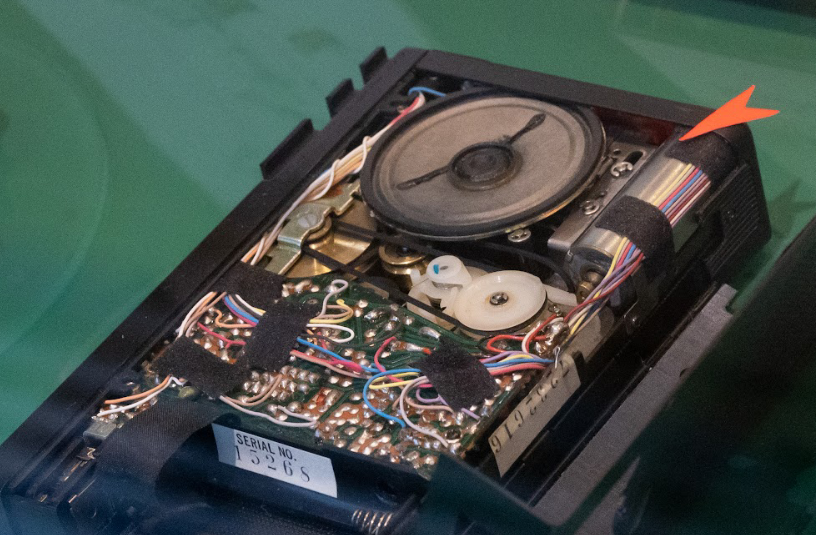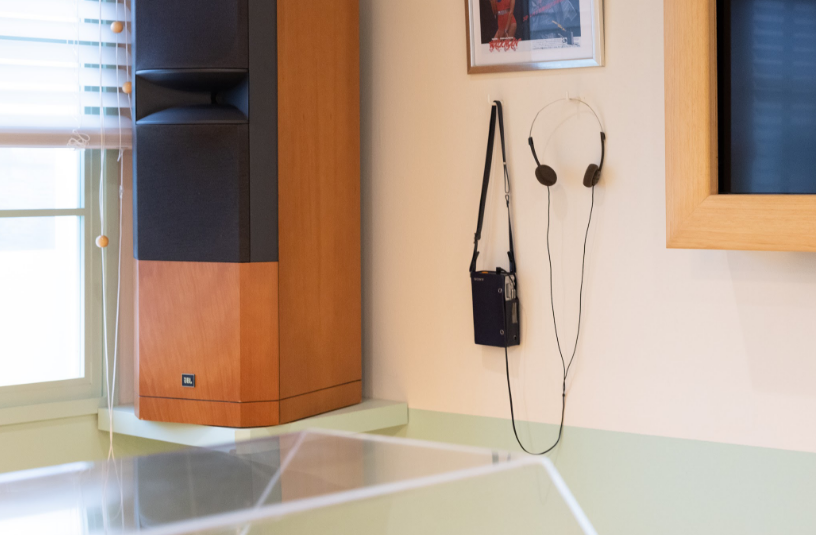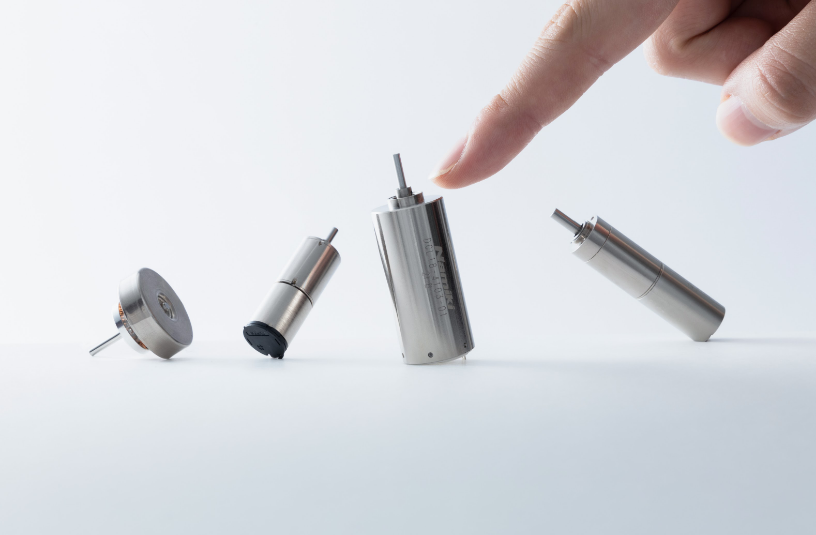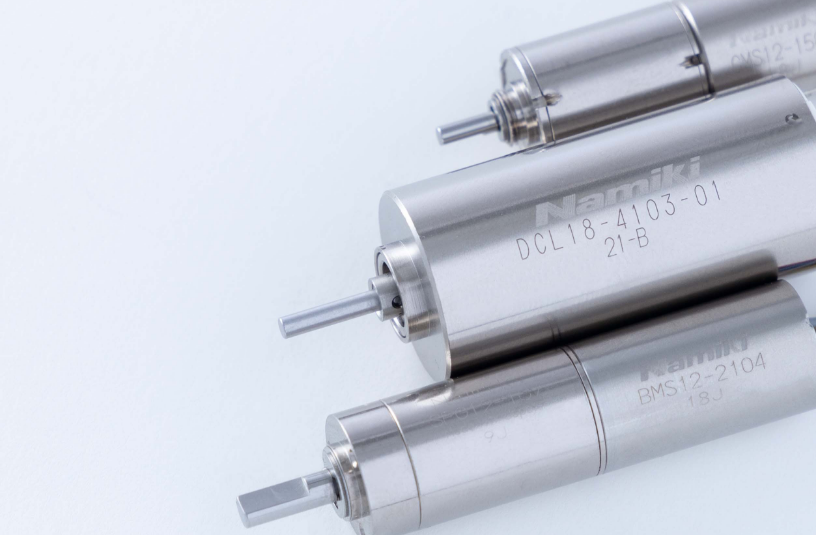Orbray President Riyako Namiki Interviews Mr. Toru Kono, who named Sony’s Walkman -- How to promote Japan’s manufacturing to the world
Orbray's Future,Vol.8
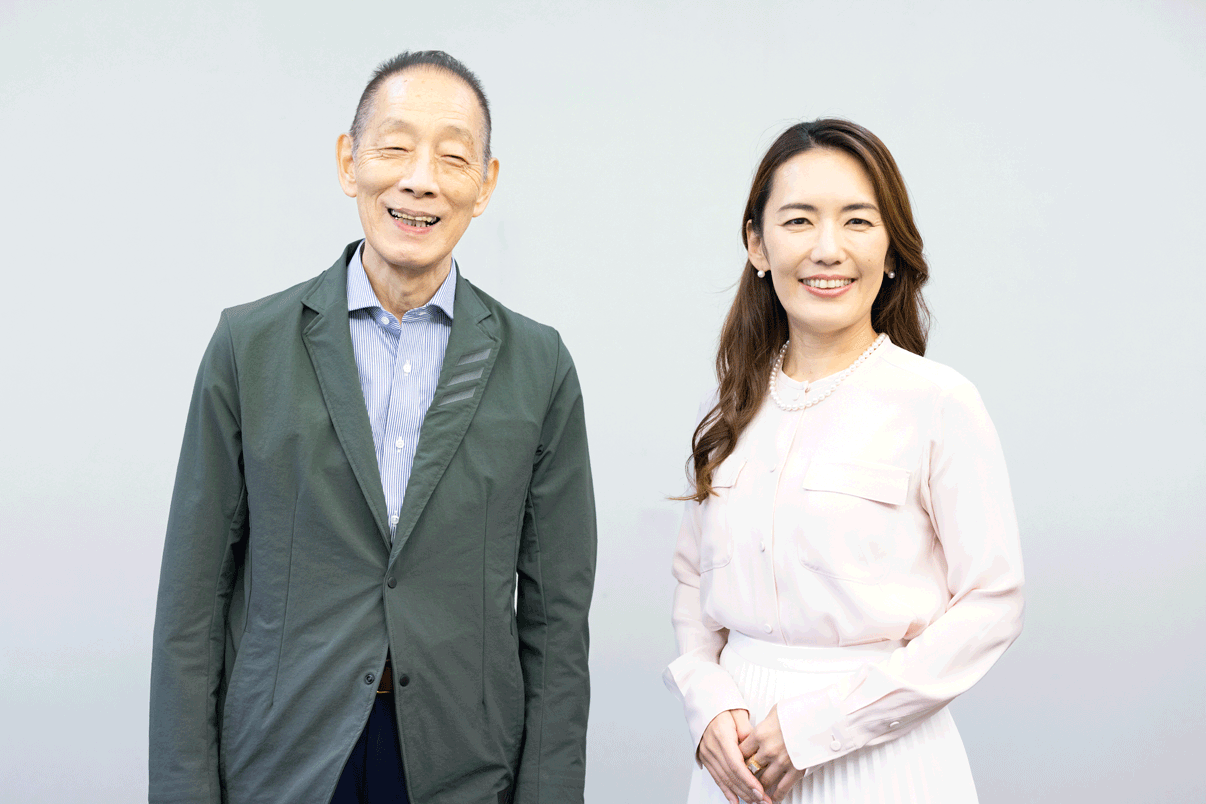
Riyako Namiki, President and CEO
On January 1, 2023, we changed the name of our company,
Adamant Namiki Precision Jewel Co., Ltd., to Orbray Co., Ltd.
Orbray President Riyako Namiki interviews Mr. Toru Kono, Sony’s former marketing genius, to discuss the fusion of Sony’s imagination with Orbray’s technology. They also explore how to connect customers with technology through “market education,” as advocated by Akio Morita, co-founder of Sony. Having joined Sony Corp. in 1968, Mr. Kono led communication strategy for Sony’s various products, including the Walkman, which he named.
Toru Kono’s Profile:
Mr. Kono graduated from Tama Art University in Tokyo, where he majored in design, before joining Sony Corp. in 1968. In 1996, he became Deputy Director of Sony Corp. (Director of the Corporate Advertising Division Center), as well as Managing Executive Officer (General Manager of the AD) for Sony Marketing Inc. In 2002, he became Executive Vice President of Sony PCL Inc. He retired from Sony in 2006. At Sony, he handled product communication strategy, product brand strategy, and corporate brand strategy. He oversaw everything from practical advertising strategies to corporate identity and global brand management. He was a member of the project team that developed the Walkman, and gave this pioneering product its unorthodox name. At OFFICE KOONOO, he currently provides consulting on brand renovation and change by analyzing brand structure and business challenges.
Introduction
Adamant Namiki Jewel Precision Co., Ltd., got its start with the manufacture of jewel bearings for electric meters, and then progressed into the production of precision products, including jewel bearings for watches and record styli. In 1973, the company succeeded in making the world’s smallest coreless motor. This motor was used in the Walkman, a revolutionary, miniature, portable cassette tape player that Sony Corp. launched in 1979. As it became a global mega hit, engineers around the world disassembled the product to find out how it worked. Inside, they found the name “NAMIKI” inscribed, and were thus introduced to our company.
History starts from a record player
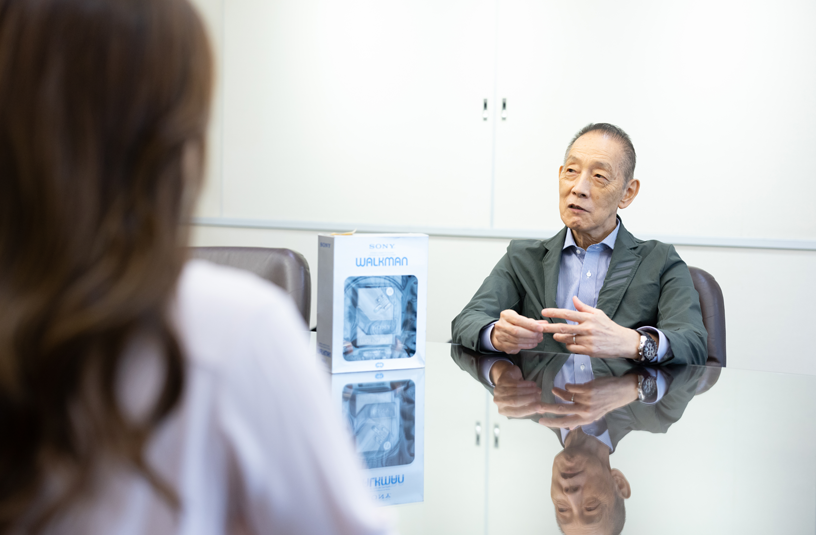
Mr. Kono: I start my story from my junior high school days. I used to go with my father to Tokyo’s Akihabara district, the hub of everything electrical in Japan. When I heard the sounds coming from foreign-made speakers and amplifiers, I was shocked. I wondered if I could create something like this for myself.
So, I went home and took apart an old electric phonograph. Inside, I found a vacuum tube. “What the heck is this?” I thought. I rushed to a secondhand bookstore, bought a stack of books and magazines, and began to make my own amplifier. I got electrocuted three times and went white during my attempts (laughs).
Pres. Namiki: Wow, that’s scary! (Laughs.) But you would never know how it worked unless you took it apart and tried to make your own. You were really getting into it.
Mr. Kono: Exactly. I was able to make radios and tube amplifiers, but I never succeeded in making a record player. I bought expensive cartridges and other parts one by one with the money I earned from my part-time job.
Pres. Namiki: So, there might be some inevitable connection between your experience in those days and your work with the Walkman years later.
Mr. Kono: Well, I wasn’t completely focused on that, but there may be some relationship. While Orbray of course provided the motor used in the Walkman, your company has developed a wide variety of products.
Pres. Namiki: I believe that one of our strengths is our diversity of products, which began with our record cartridges. Even today, we use our precision technology in “cutting, grinding, and polishing” to make record styli, such as our MicroRidge stylus, which takes one month to process to the thinness of a human hair. This is currently the most expensive stylus in the world, and we are the only company that is capable of manufacturing such a product. The technology that makes this possible is based on the knowledge and expertise that we have continued to advance since the days when we made only jewel bearings. Furthermore, we have utilized our technological breakthroughs in record styli and cartridges to create diverse products. We are currently working on a wide range of projects, including synthetic diamond, which we are not yet ready to introduce.
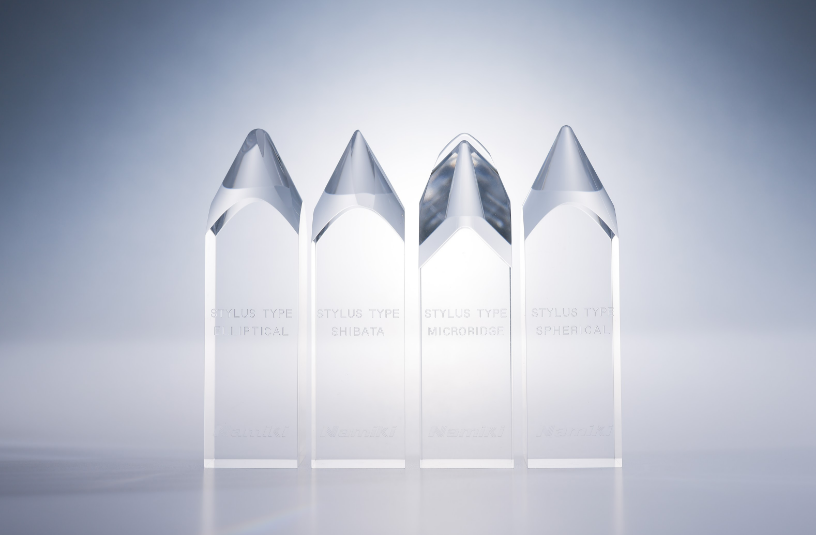
Mr. Kono: Your technology of transforming vibrations into electrical signals eventually led to the development of the coreless motor. That makes sense to me.
Pres. Namiki: Really? Few people understand that (laughs). When we explain the history of our company at our small showroom, many people are very interested in the Walkman.
Mr. Kono: Is that so?
Pres. Namiki: Our coreless motor was used in the Walkman, and the company name “Namiki” was inscribed on the motor. When Walkman sales exploded worldwide, engineers across the globe took it apart to see how it worked. They found our name.
Pres. Namiki: And that led to further developments. Motorola Inc. in the U.S. contacted us, saying they wanted to make a communication device that made no sound when being used in hospitals. This request led us to invent a vibrating motor for use in pagers, which was later adopted for use in mobile phones. The vibration function originated in the motor used in the Walkman. Few people realize that the vibration function was a Japanese invention and that the Walkman led to its creation. We should publicize this much more.
“Market education” and “the impossible” inspire new technology
Pres. Namiki: I think that Japanese people are not very good at promotion. Although Japanese are good at manufacturing, their reserved craftsman spirit seems to make them too reserved when it comes to selling products. What do you think?
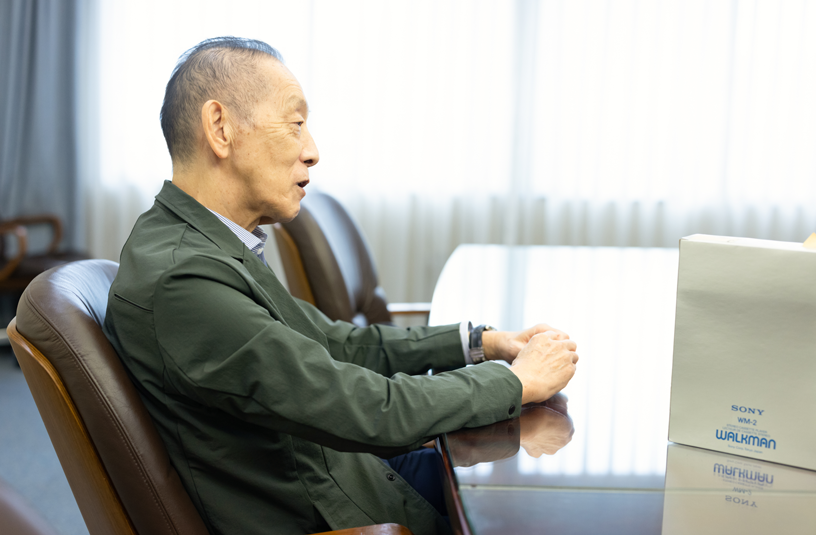
Mr. Kono: I don’ think Japanese people are poor at selling in general. Sony, in particular, sells consumer products directly to customers, so it places great importance on relationships. Akio Morita, one of Sony’s co-founders, said, “Marketing is market education.” This doesn’t mean “enlightenment” from a top-down perspective, but rather education regarding a product’s utility.
Moreover, it’s not PR, but the accumulated efforts to create customers. So, I believe what we developed at Sony wasn’t “advertising” but something like market education. That’s why I have negative feelings if someone describes my work at the company as “promotion” (laughs).
Pres. Namiki: This is the first time that I have heard the term “market education.” I’m very inspired by that. You suggest to customers that they can enjoy new life experiences if they use your product. And that’s what Mr. Morita was conscious of from the beginning.
Hardware maker or software maker?
Mr. Kono: Sony didn’t develop the transistor. What the company did was to start producing personal mobile gadgets that put the transistor to practical use, a feat that had been considered very difficult. It required the extremely arduous work of further advancing the peripheral technology necessary for miniaturization. In a sense, the company’s ability to shrink the size of products from the vacuum tube era was a triumph of conceptualization and new perspectives. That’s why I think of Sony not as a hardware maker, but rather as a software maker. However, Sony has never presented itself as such.
Pres. Namiki: I have never regarded Sony as a software maker. Sony and our company work in different fields, and I believe that our differences are actually the very reason that we were able to achieve such synergy through our combined expertise.
Mr. Kono: The president of a major parts manufacturer once told me that he believed Japanese parts makers owed a lot to Masaru Ibuka, Sony’s other co-founder. Sony’s groundbreaking miniaturization of consumer products, which took advantage of the small size of transistors, forced makers of other parts, such as condensers/capacitors and resistors, to likewise downsize their parts. Pressure to meet such orders created Japan’s great electronics industry.
Pres. Namiki: It’s easy to say, “Just make things smaller,” but nobody had actually done it before.
Mr. Kono: That’s right. In responding to this demand, Japan revealed its hidden strength.
Pres. Namiki: Our company was given the privilege of participating in the joint effort to make things smaller. We specialize in responding to customers’ requests and bringing to fruition their conceptualizations. At first we think, “this is impossible,” but then we get to work figuring out how we could do it. I am amazed with Japanese people’s ability to maintain their focus and continue their painstaking efforts over many years to attain their goals.

From “Pressman” to “Walkman”
Pres. Namiki: The launch of the Walkman in 1979 caused quite a sensation. How did Japan and the rest of the world react to it?
Mr. Kono: At that time, 30 years had passed since the launch of the open-reel tape recorder. Meanwhile, cassette tapes and portable radio cassette tape recorders emerged as a more convenient alternative. Sony thrived as demand soared for these new audio devices. However, when the market for radio cassette tape recorders became saturated, Sony’s tape recorder division languished. Before the birth of the Walkman, employees in this division were jokingly described as having no real work to do except gazing out the window (laughs).
Pres. Namiki: I understand such times.
Mr. Kono: Then, Sony launched a small portable cassette tape recorder with sockets for an external microphone and headphones, named the “Pressman,” which sold well. Thinking somewhat beyond what the Pressman offered, Mr. Ibuka, Sony’s co-founder, asked us to make an audio device with good sound quality that would allow him to listen to music while flying overseas. So, we modified the Pressman by equipping it with lightweight stereo headphones. Mr. Ibuka rushed to show it to Mr. Morita, Sony’s other co-founder, exclaiming, “This is great!” Mr. Morita was also impressed, predicting it would become a hit. So as tape recorders were declining in popularity, we developed a new cassette tape player that had no recording function.
At that time, while we were thinking about a name for the new product, we recruited a promotion team. In just six months, we had rushed from prototype to finished product. But when we presented the product to the marketing staff, they gave it a cold reception. In fact, we were harshly criticized and told that it would be difficult to sell such a product because everyone expected a cassette tape player to also be capable of recording, whereas the only thing the new product could do was to play a cassette tape.
Here, market education really mattered. We focused on the fact that there were hundreds of millions of recorded tapes in the world, but few of them were actually listened to in daily life. At presentations, we emphasized that the device would herald a new era of actually listening to recordings instead of making more recordings. We collected and presented data to back up our argument.
Holding the new product in our hands, we kept preaching like missionaries (laughs). Instead of waiting for questions and answers, we put headphones on those we were trying to convert and made them listen (laughs).
In those days, nobody walked around with headphones on, which would have looked very strange. We wondered how to make it look not just normal but trendy. We decided to wear headphones on Tokyo’s most crowded trains, for hours at a time.
Pres. Namiki: So, you tried to make headphones part of the usual Tokyo scenery.
Mr. Kono: Today, I have brought something here that I thought might spur our conversation. To my surprise, I found a Walkman with the serial number 1 when I was cleaning my house. It was in an unopened package with this note: “Walkman II No. 1 for preservation.”
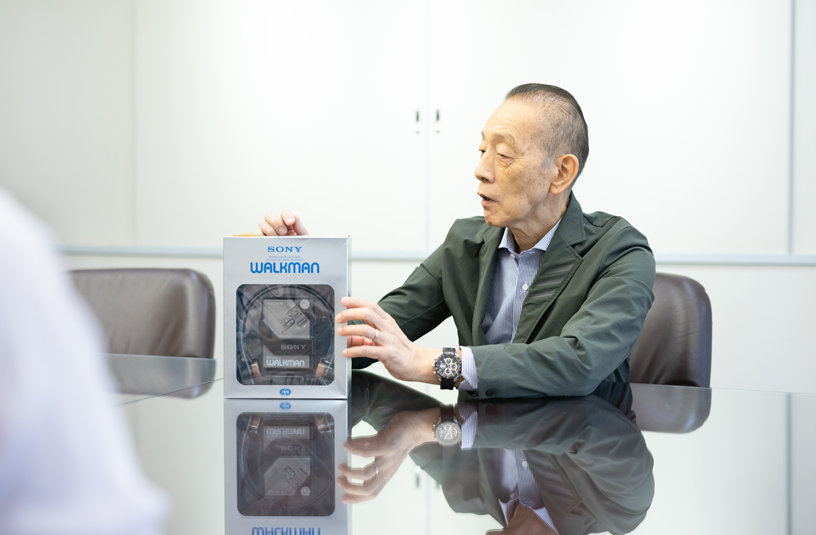
Pres. Namiki: Wow! Such a priceless treasure!
Mr. Kono: I can’t figure out why I have this. I think someone may have given it to me. Probably Mr. Morita. I thought this would be a good opportunity to show it to you.
Pres. Namiki: We can change consumers’ perception by giving them an opportunity to try a new product. No matter what kind of presentation you make, nobody listens. The best teacher is experience. This is the essence of “communication.”
“Ideas” created through “mutation,” and “Trust” predicated on continuity
Pres. Namiki: I have been convinced that Japan’s manufacturing has been built up through the fusion of “ideas” and “things.”
Mr. Kono: I believe that ideas are a kind of mutation, and I think that’s a key point.
Pres. Namiki: I agree. I realize that manufacturing can’t be done by just one person or one company. At our company, we struggle to come up with the next new thing, but it’s not at all easy. Up until now, our customers have brought us ideas, and we have developed them into products. Today I have realized again that this process is the core of Japan’s manufacturing. We need more such collaboration between those who are good at conceptualization and those who are good at manufacturing.
Mr. Kono: Of course, manufacturing also includes conceptualization.
Pres. Namiki: Yes, it does. Suddenly a breakthrough will occur for a problem that we thought was impossible to solve. I think it’s important to leverage the expertise of everyone.
Mr. Kono: Do Orbray’s researchers and engineers have any methods or formulas for coming up with ideas?
Pres. Namiki: Typically, ideas come from our customers. However, in the field of material development, our researchers are creating new materials that do not yet exist in the world. Moreover, we recently produced the world’s largest diameter synthetic diamond substrate. In addition to such advanced innovation, I think our strength is to turn our customers’ conceptualizations into reality.

Pres. Namiki: To continue to be trusted with customers’ ideas, we need to build and maintain strong relationships. I joined our company only three years ago and I’ve been the president for just the past two years, but I often talk with our customers. Some customers have been doing business with us for four decades. Some of them had mega hit products in the past but now aren’t generating such big business. Even so, we still maintain our relationship of trust with them. This gives us a very strong advantage. Although the world is expected to change rapidly from now on, if we maintain our relationships through thick and thin over the next 100 years, such connectedness will allow us to take advantage of the “mutations” that will crop up at some point.
Making the impossible possible can establish a relationship of trust. Our customers continue to choose us thanks to our relationship of trust. At the heart of such relationships are our intentions to produce things that benefit the world as well as people. This creates synergy and a positive feedback loop with our customers. Also, I think word of mouth has a big impact on how we are perceived.
Mr. Kono: Yes, word of mouth always plays a big role, regardless of the period.
Communicating through branding for a B2B company
Pres. Namiki: You are an expert in brand strategy. In January, we are going to change our company name to Orbray Co., Ltd., from Adamant Namiki Jewel Precision Co., Ltd. No other B2B company of our size has ever done a rebranding, and we have been receiving a great deal of feedback. Frankly speaking, it took a year for us just to persuade our employees. When we started, all our employees were against a name change.
Mr. Kono: We have to begin by changing the in-house mindset, and then communicate outwards. If we don’t do it in this order, we cannot gain company-wide understanding. What we are doing is education. We need to watch a company’s performance to see what kind of effects branding will bring about. Branding is an accumulation of actions, not just giving something a new name. Only through continuous effort can we can establish a brand.

Mr. Kono: We can’t say that B2B manufacturing companies have no need for branding. Nor can we conclude that all of them need it. It really depends on each company’s situation. For example, a company may turn to branding if its business has changed, or if it has outgrown its image, inside or outside the company.
I think the reason that Japan’s manufacturing industry was so highly acclaimed is the way that Japanese makers managed their operations, which were located in Japan. Now, however, production has moved abroad, to China, South Korea, and other foreign countries.
Pres. Namiki: We still want to present Japan’s manufacturing expertise to the world. I agree that Japanese companies are now facing the need for re-evaluation and transformation. The reason I decided to change our company name was to allow everyone to reimagine the company and our own work. The current name is based on the founder’s name, “Namiki,” which implies the traditional hierarchy with the owner at the top. Instead, I see the company as a living organism, with everyone’s unique brilliance illuminating the path forward for us all. Talking with you has allowed me to better understand my own ideas. Thank you very much.
Disseminating information through the cognoscenti
Pres. Namiki: Our motors are incorporated into both the Pressman and the Walkman. Earlier, you said the name “Pressman” didn’t work overseas. Did the choice of “Walkman” instead of “Pressman” generate any reaction overseas?
Mr. Kono: The name “Walkman” was my idea, but we originally called it “WALKIE,” because it had an “A” in it. For our logo, we wanted to attach an illustration of a foot to each “leg” of the “A” to make the product look outdoor oriented. However, we discovered that Toshiba Corp. had already trademarked the name “WALKIE.” We had a big problem! I really wanted to include that foot image in the logo, so I came up with the idea of combining “Pressman” and “WALKIE,” a process that now might seem a bit commonplace. The result, “Walkman,” was kind of a strange Japanese-English name. The name didn’t seem to work overseas, so we decided to use different names in different overseas markets: “Soundabout” for the U.S., “Stowaway” for the U.K., and “Freestyle” for Scandinavia.

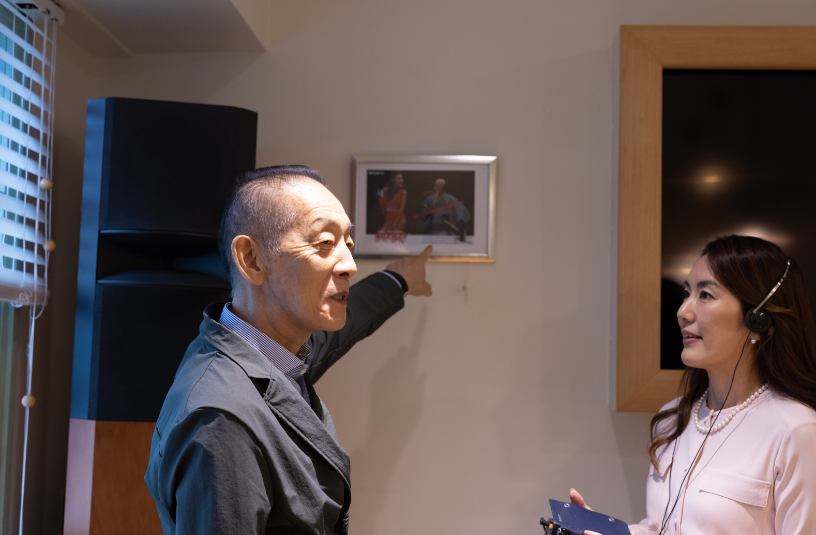
Mr. Kono: Following the launch of the Walkman, Mr. Morita, Sony’s co-founder, gave the new device to Mr. Seiji Ozawa – the world-famous Japanese conductor who at that time was the music director of the Boston Symphony Orchestra – as well as to the orchestra members and others in the music world. The Boston Symphony members, having good ears for music, were so impressed with the product that they spread the name “Walkman,” which became more popular than the name intended for the U.S. market. At that point, Mr. Morita proposed using the name “Walkman” for the entire global market. He had a good hunch.
Pres. Namiki: That was an important point, that the first people to use the new device were the Boston Symphony members, who knew the essence of music.
Mr. Kono: Exactly. Those who first understood the value of our new device were musicians.
Pres. Namiki: They were what we call “influencers” nowadays.
Mr. Kono: We didn’t plan it that way, it just happened. But afterward, it made me think about such effects.

Promoting Japan’s manufacturing to the world
Pres. Namiki: We would like to promote Japan’s manufacturing to the rest of the world. I would really appreciate any advice you could give me on this.
Mr. Kono: Yours is not an easy task, but here are some ideas. Some of your products support the core system of manufacturing.
Pres. Namiki: You are right. We are proud of supporting manufacturing from behind the scenes.
Mr. Kono: You are doing an important but low-profile job, which I think is the case with all parts makers.
One idea for raising your profile is to attend the watch trade fair held in at Basel, Switzerland, which showcases the world’s finest watches. By letting others know that your company’s products are used in those watches, the information will quickly spread throughout the watch world. Then just leave it at that.
You should strategically select your next target, such as telecommunications equipment or the space industry. Any attempt to create word of mouth intentionally would backfire. Earlier, you mentioned the importance of word of mouth. The advertising era is over.
Pres. Namiki: It’s great to be able to talk about such worthwhile topics, like the story of the Walkman, which offers such valuable lessons for today. Thank you very much.
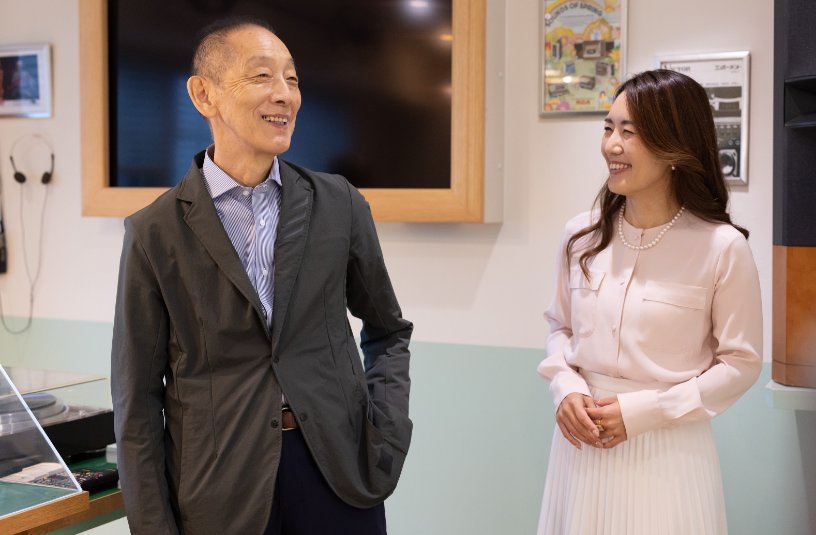
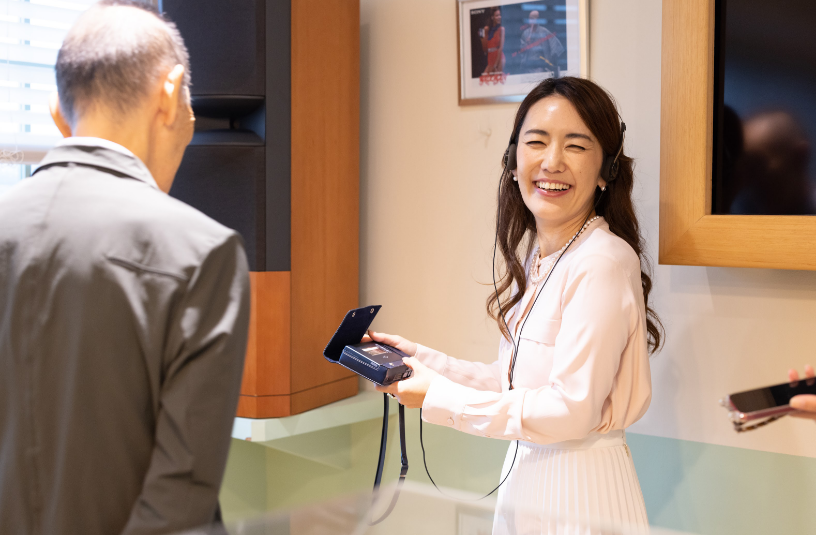

Company Information
Orbray Newsletter
Be the first to know about article updates and new product information from Orbray.
Other Columns
Vol.7
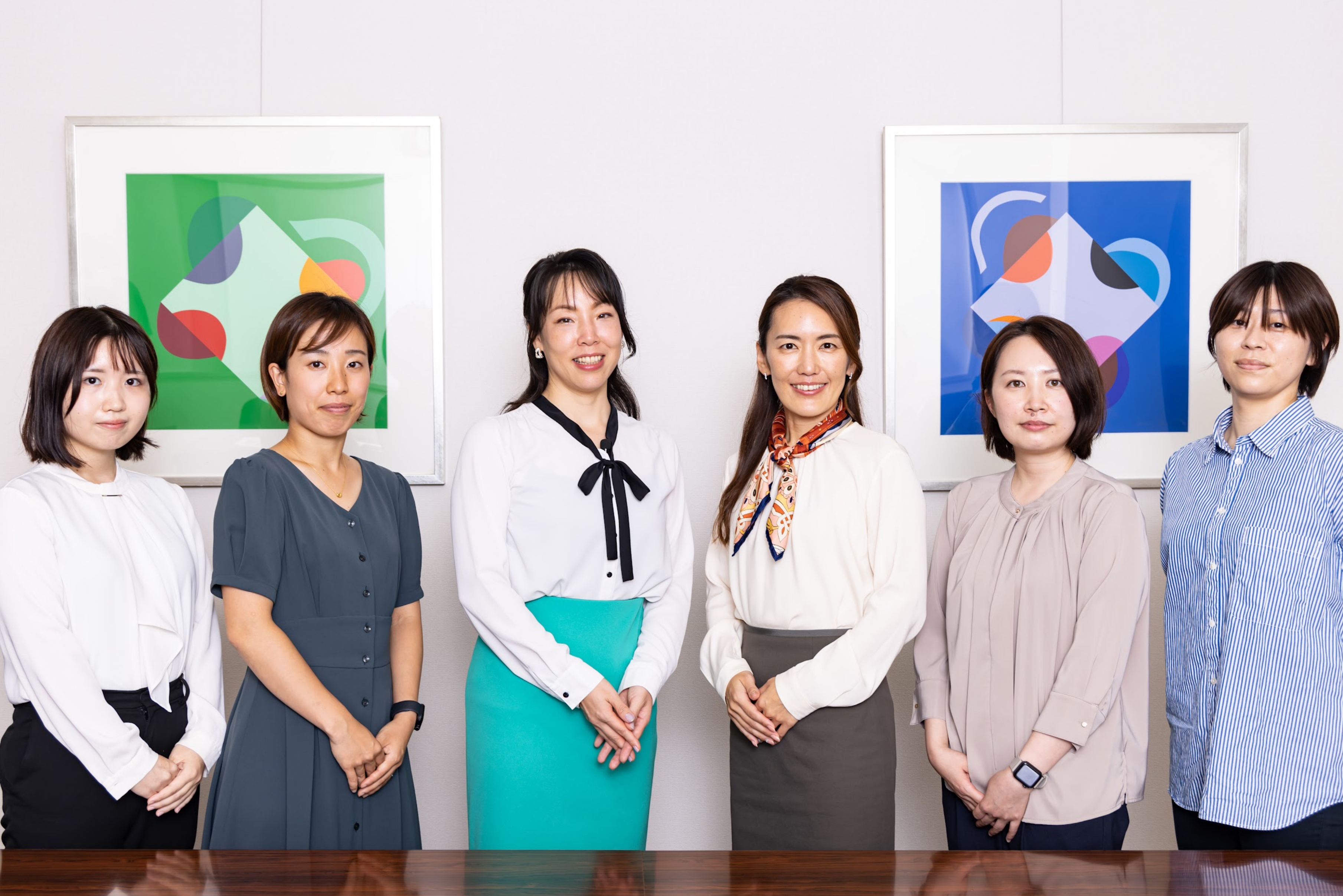
Ms. Sachiko Habu Holds a Discussion with President Riyako Namiki and Orbray’s Female Employees
Building a company where a diversity of people can work together productively
Vol.9
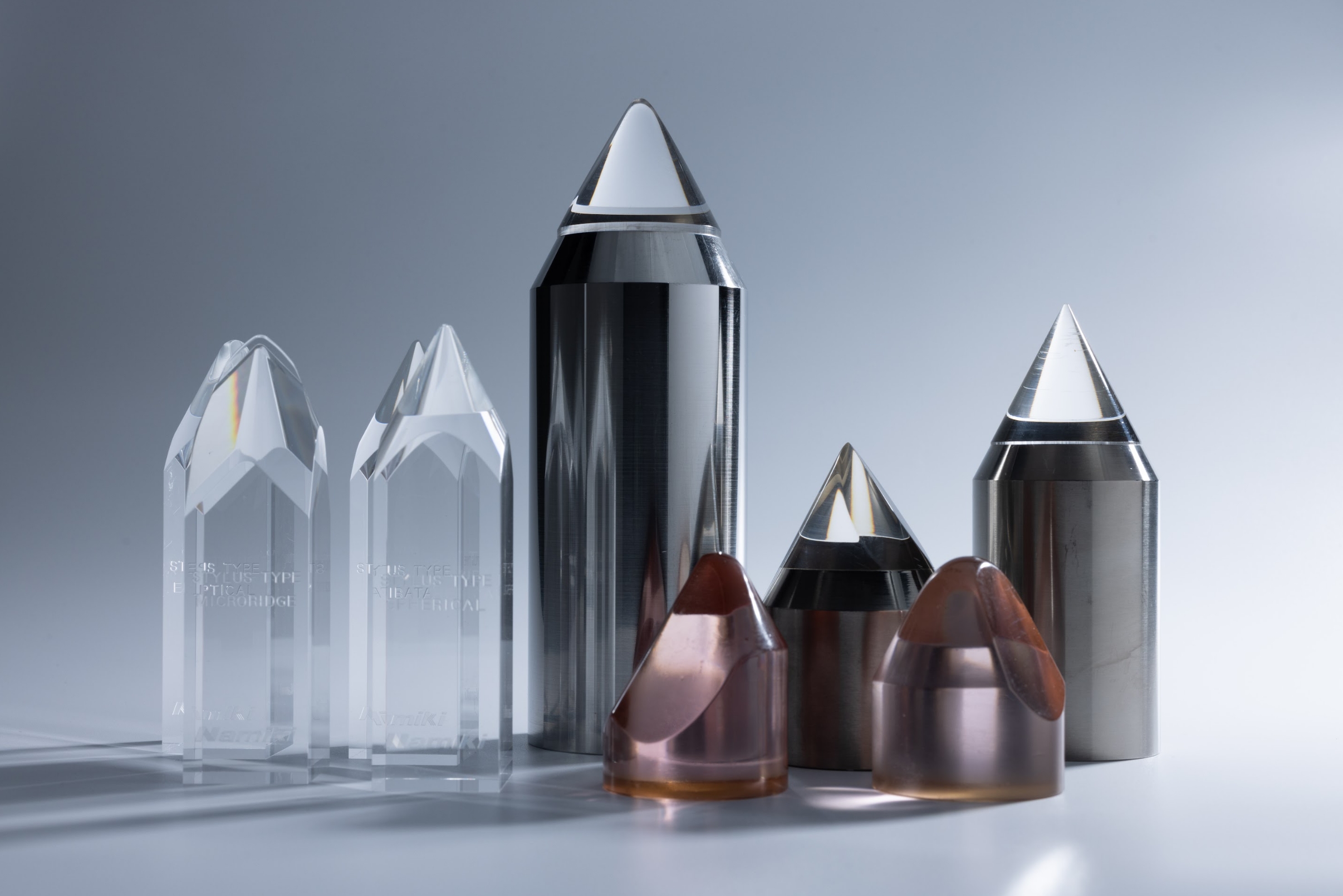
January, 2023


